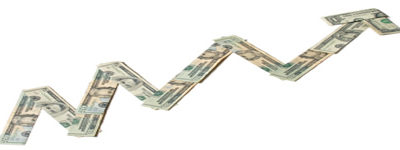%
Jubak’s Picks Performance 1997-2019
Jubak’s Picks
Buy and hold? Not really.
Short-term trading?
Not by a long shot.
So what is the stock-picking style of The Jubak’s Picks portfolio?
Click to expand...
Click to View the Jubak’s Picks Portfolio
I try to go with the market’s momentum when the trend is strong and the risk isn’t too high, and I go against the herd when the bulls have turned piggy and the bears have lost all perspective. What are the results of this moderately active — the holding period is 12 to 18 months — all-stock portfolio since inception in May 1997? A total return of 584% as of December 31, 2019. That compares to a total return on the S&P 500 stock index of 335% during the same period.
%
Top 50 Stocks Performance 2019
Top 50 Stocks
This long-term, buy-and-holdish portfolio was originally based on my 2008 book The Jubak Picks.
Trends that are strong enough, global enough, and long-lasting enough to surpass stock market averages.
Click to expand...
Click to view the Top 50 Stocks Portfolio
In The Jubak’s Picks Portfolio I identified ten trends that were strong enough, global enough, and long-lasting enough to give anyone who invested in them a good chance of beating the stock market averages.
To mark the publication of my new book on volatility, Juggling with Knives, and to bring the existing long-term picks portfolio into line with what I learned in writing that book and my best new ideas on how to invest for the long-term in a period of high volatility, I’m completely overhauling the existing Top 50 Picks portfolio.
You can buy Juggling with Knives at bit.ly/jugglingwithknives
%
Dividend Income Performance 2021
Dividend Income
Every income investor needs a healthy dose of dividend stocks.
Why bother?
Why not just concentrate on bonds or CDs?
Click to expand...
Click to view the Dividend Income Portfolio
Because all the different income-producing assets available to income investors have characteristics that make them suited to one market and not another. You need all of these types of assets if you’re going to generate maximum income with minimum risk as the market twists and turns.
For example: bonds are great when interest rates are falling. Buy early in that kind of market and you can just sit back and collect that initial high yield as well as the capital gains that are generated as the bonds appreciate in price with each drop in interest rates.
CDs, on the other hand, are a great way to lock in a yield with almost absolute safety when you’d like to avoid the risk of having to reinvest in an uncertain market or when interest rates are crashing.
Dividend stocks have one very special characteristic that sets them apart from bonds and CDs: companies raise dividends over time. Some companies raise them significantly from one quarter or year to the next. That makes a dividend-paying stock one of the best sources of income when interest rates start to rise.
Bonds will get killed in that environment because bond prices will fall so that yields on existing bonds keep pace with rising interest rates.
But because interest rates usually go up during periods when the economy is cooking, there’s a very good chance that the company you own will be seeing rising profits. And that it will raise its dividend payout to share some of that with shareholders.
With a dividend stock you’ve got a chance that the yield you’re collecting will keep up with rising market interest rates.
But wouldn’t ya know it?
Just when dividend investing is getting to be more important—becoming in my opinion the key stock market strategy for the current market environment—it’s also getting to be more difficult to execute with shifting tax rates and special dividends distorting the reported yield on many stocks.
I think there’s really only one real choice—investors have to pull up their socks and work even harder at their dividend investing strategy. That’s why I revamped the format of the Dividend Income portfolio that I’ve been running since October 2009. The changes aren’t to the basic strategy. That’s worked well, I think, and I’ll give you some numbers later on so you can judge for yourself. No, the changes are designed to do two things: First, to let you and me track the performance of the portfolio more comprehensively and more easily compare it to the performance turned in by other strategies, and second, to generate a bigger and more frequent roster of dividend picks so that readers, especially readers who suddenly have a need to put more money to work in a dividend strategy, have more dividend choices to work with.
Why is dividend investing so important in this environment? I’ve laid out the reasons elsewhere but let me recapitulate here. Volatility will create repeated opportunities to capture yields of 5%–the “new normal” and “paranormal” target rate of return–or more as stock prices fall in the latest panic. By using that 5% dividend yield as a target for buys (and sells) dividend investors will avoid the worst of buying high (yields won’t justify the buy) and selling low (yields will argue that this is a time to buy.) And unlike bond payouts, which are fixed by coupon, stock dividends can rise with time, giving investors some protection against inflation.
The challenge in dividend investing during this period is using dividend yield as a guide to buying and selling without becoming totally and exclusively focused on yield. What continues to matter most is total return. A 5% yield can get wiped out very easily by a relatively small drop in share price.
Going forward, I will continue to report on the cash thrown off by the portfolio—since I recognize that many investors are looking for ways to increase their current cash incomes. But I’m also going to report the total return on the portfolio—so you can compare this performance to other alternatives—and I’m going to assume that an investor will reinvest the cash from these dividend stocks back into other dividend stocks. That will give the portfolio—and investors who follow it—the advantage of compounding over time, one of the biggest strengths in any dividend income strategy.
What are some of the numbers on this portfolio? $29,477 in dividends received from October 2009 through December 31, 2013. On the original $100,000 investment in October 2009 that comes to a 29.5% payout on that initial investment over a period of 39 months. That’s a compound annual growth rate of 8.27%.
And since we care about total return, how about capital gains or losses from the portfolio? The total equity price value of the portfolio came to $119,958 on December 31, 2012. That’s a gain of $19,958 over 39 months on that initial $100,000 investment or a compound annual growth rate of 5.76%.
The total return on the portfolio for that period comes to $49,435 or a compound annual growth rate of 13.2%.
How does that compare to the total return on the Standard & Poor’s 500 Stock Index for that 39-month period? In that period $100,000 invested in the S&P 500 would have grown to $141,468 with price appreciation and dividends included.) That’s a total compounded annual rate of return of 11.26%.
That’s an annual 2 percentage point advantage to my Dividend Income portfolio. That’s significant, I’d argue, in the context of a low risk strategy.
Portfolio Related Posts
Facebook reports big gain in number of advertisers in run up to earnings
Facebook (FB) Chief Operating Officer Sheryl Sandberg told Reuters that the company now had 5 million active advertisers on its network each month. That’s up from 4 million advertisers in September and 3 million in March 2016. The number of businesses with mobile pages hit 65 million and 8 million businesses have Instagram profiles. Active advertisers on Instagram have climbed to 1 million. That’s a rough quintuple in a year.
Sell Softbank: Not the Asia Internet startup exposure I wanted from this stock
Tomorrow April 6 I’m going to sell Softbank Group (SFTBY) out of my Jubak Picks portfolio. The shares are up 21.19% since I added them to this portfolio back on February 20, 2015.
Sell Vulcan Materials–I don’t see an infrastructure package this year
With the Senate about to go nuclear as Republicans change the Senate rules so they can avoid a Democratic filibuster and send Neil Gorsuch to the Supreme Court, any small chance that Democrats would work with Republicans to pass some version of President Trump’s $1 trillion infrastructure spending plan has gone from slim to none. Think Democrats will have any inclination to vote with Trump after seeing Republicans stonewall President Obama’s nominee for the court and then ram Gorsuch down their throats? And Trump needs Democratic votes because substantial numbers of the members of his own party in Congress will vote against infrastructure spending.
Next hurdle for Apple shares? April 21
The next big test of the Apple super-cycle story, however, is set for April 21 when Samsung’s new Galaxy S8 is scheduled to go on sale. The S8 launch is a big deal for Apple, Apple investors, and Samsung.
Picks for the Permian Boom Part 2–Among shovel-makers my choice is Helmerich & Payne
The sell off in the oil sector over the last couple of days makes this a good time to move on to another set of picks, shares of those companies that supply the “shovels,” in this case the drilling rigs–that make the boom in the Permian Basin possible. Way, way back to the Gold Rush in California and the Gold Rush in Alaska–and before–the people who made the most reliable money in commodity booms weren’t the prospectors who took all the risk but the folks who sold them the shovels, the food, the mining pans and more that made looking for gold possible.
Buying ING in my Dividend Portfolio tomorrow
Tomorrow I’ll be adding ING Groep (ING) to my Dividend Portfolio. The Dutch-headquartered banking company pays a 4.87% yield. Five reasons to buy ING now. Three macro reasons. Growth in Europe, especially in the company’s German market, has picked up.
Long-term pick Chesapeake becomes a short-term trade too
On February 23 Chesapeake Energy (CHK) reported another big step toward break-even. The company’s net loss for the fourth quarter fell to $741 million (or 84 cents a share) from $2.23 billion (or $3.36 a share) in the fourth quarter of 2015. Investors were disappointed that revenue fell 24% to $2.02 billion in the period, but that’s what happens when you sell assets to repair a dangerously indebted balance sheet. Chesapeake still finished 2016 with $9 billion in debt, but the company has successfully reduced the amount of that debt that’s due soon (through 2018) to less than $100 million from a prior and very threatening $3.2 billion. The company also showed solid additions to oil and natural gas reserves. Proved reserves climbed 14% and the company showed a reserve replacement ratio of 267%. For 2017 the company expects to increase its capital spending program and put more rigs to work on its 8 million leased acres with increased activity weighted toward the second half of 2017. The company ended 2016 running 17 rigs and projects that it will complete 130 to 160 wells per quarter in the second half of 2017.
Head winds? What head winds? Middleby is profiting from cost battle in fast food sector
Everyone knows that the fast food (or quick service restaurant) segment is struggling as companies such as McDonald’s (MCD) and Wendy’s (WEN) cut prices in what sometime looks like a suicidal effort to build traffic and sales. You’d figure that hard pressed restaurant chains would be cutting spending on new cooking systems–Middleby’s (MIDD) segment–to the bone. But that’s not the case. Middleby actually offers its restaurant customers one of the only viable paths out of their competitive battle










